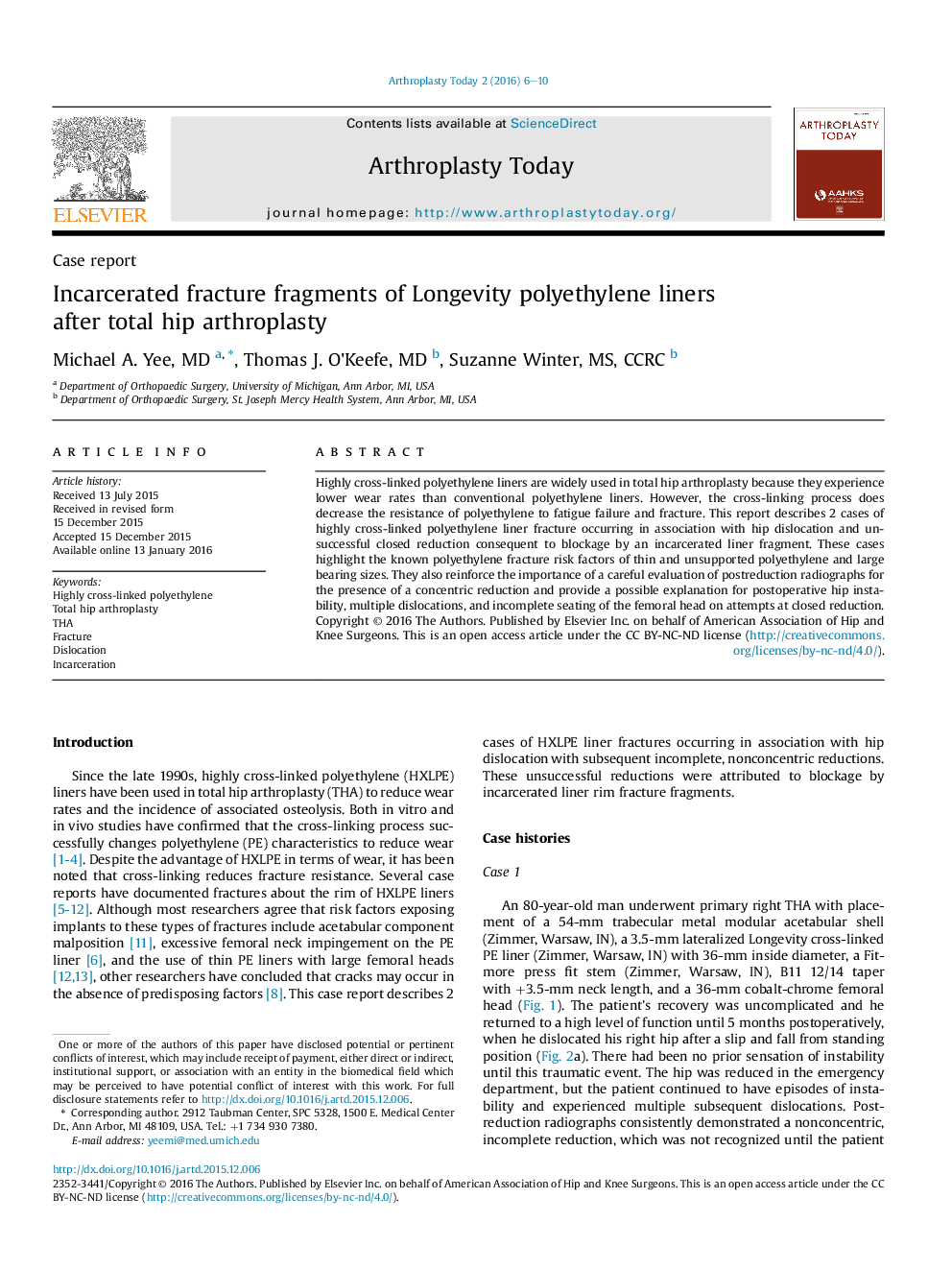| Article ID | Journal | Published Year | Pages | File Type |
|---|---|---|---|---|
| 4041595 | Arthroplasty Today | 2016 | 5 Pages |
Highly cross-linked polyethylene liners are widely used in total hip arthroplasty because they experience lower wear rates than conventional polyethylene liners. However, the cross-linking process does decrease the resistance of polyethylene to fatigue failure and fracture. This report describes 2 cases of highly cross-linked polyethylene liner fracture occurring in association with hip dislocation and unsuccessful closed reduction consequent to blockage by an incarcerated liner fragment. These cases highlight the known polyethylene fracture risk factors of thin and unsupported polyethylene and large bearing sizes. They also reinforce the importance of a careful evaluation of postreduction radiographs for the presence of a concentric reduction and provide a possible explanation for postoperative hip instability, multiple dislocations, and incomplete seating of the femoral head on attempts at closed reduction.
